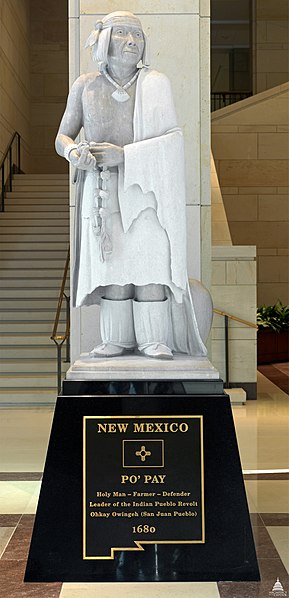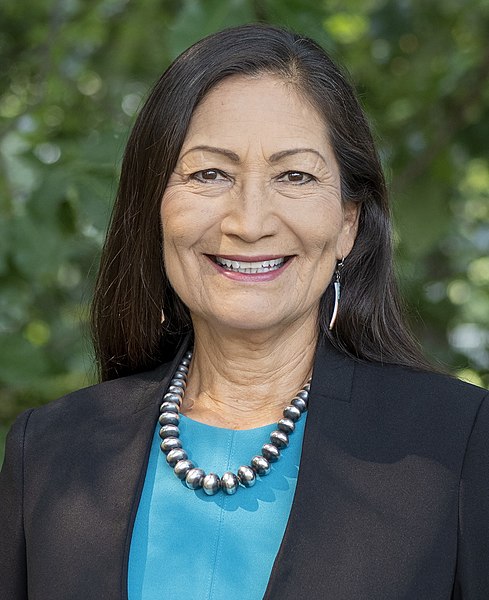The Pueblo Revolt of 1680, also known as Popé's Rebellion or Po'pay's Rebellion, was an uprising of most of the indigenous Pueblo people against the Spanish colonizers in the province of Santa Fe de Nuevo México, larger than present-day New Mexico. Incidents of brutality and cruelty, coupled with persistent Spanish policies that stoked animosity, gave rise to the eventual Revolt of 1680. The persecution and mistreatment of Pueblo people who adhered to traditional religious practices was the most despised of these. The Spaniards were resolved to abolish "pagan" forms of worship and replace them with Christianity. The Pueblo Revolt killed 400 Spaniards and drove the remaining 2,000 settlers out of the province. The Spaniards returned to New Mexico twelve years later.
Taos Pueblo served as a base for Popé during the revolt.
The Palace of the Governors in Santa Fe, seen here in a 1930s postcard, was besieged by the Pueblo in August 1680.
The primary cause of the Pueblo Revolt was probably the attempt by the Spanish to destroy the religion of the Puebloans, banning traditional dances and religious icons such as these kachina dolls.
Statue of Po’pay by Cliff Fragua in the National Statuary Hall
The Puebloans, or Pueblo peoples, are Native Americans in the Southwestern United States who share common agricultural, material, and religious practices. Among the currently inhabited Pueblos, Taos, San Ildefonso, Acoma, Zuni, and Hopi are some of the most commonly known. Pueblo people speak languages from four different language families, and each Pueblo is further divided culturally by kinship systems and agricultural practices, although all cultivate varieties of corn (maize).
Tribal Council Building, Isleta Pueblo NM
Debra Haaland, one of the first Native American women elected to the House of Representatives, is a citizen of Laguna Pueblo.
Jemez Pueblo shield, c. 1840
A Zuni drying platform for maize and other foods, with two women crafting pottery beneath it. From the Panama-California Exposition, San Diego, California. January 1915.








